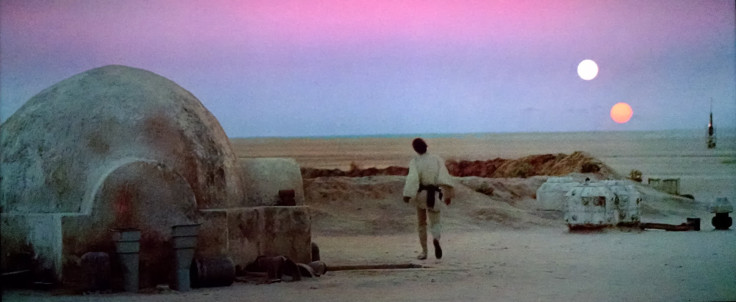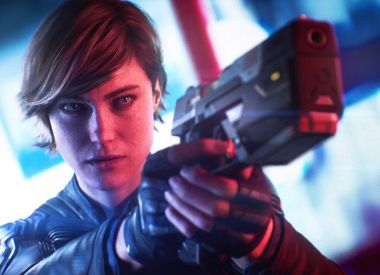Last week’s leak from the set of Star Wars: Episode VIII The Last Jedi revealed how Supreme Leader Snoke won’t be much like Emperor Palpatine at all. For the sake of comparison, I looked at the Emperor’s relatively minor role in The Empire Strikes Back and in the process came across several examples of the most repulsive subgenres of Star Wars web content: “XX Ways The Star Wars Special Editions Improved On The Originals.”
Don’t do this.
There is only one option: they must be erased and forgotten. Anything else is appeasement and capitulation to a great artistic evil.
Very nearly every geek-oriented website has some variation on this article, but to prevent all of the blood vessels in my face from bursting, let’s look only at io9’s: “6 Ways the Star Wars Special Editions Actually Improved The Original Trilogy.” Ow, there goes my supratrochlear vein.
It is possible to refute some of these “improvements” piecemeal. For example, the new, more sweeping establishing shot of Mos Eisley is complete garbage, as are the super wide planetary celebration shots that replaced the “Yub Nub” Ewok Celebration Song at the end of Return of the Jedi. These are changes that have a superficial logic — we need to better understand the scale of Star Wars society — but a heinous aesthetic.
But doing this point-by-point endorses the essential, unspoken premise underlying these posts: that it’s ever acceptable to alter movies after release. This premise plays out in all sorts of insidious ways, enfolding anyone who argues for a positive side to the Star Wars Special Editions in a conspiracy against the original artistic vision. This isn’t a fight over whether Han shot first or not, it’s a fight for the soul of Star Wars and the foundational assumption that each film is a work of art, complete in itself, deserving of its integrity.
Just look at io9 writer James Whitbrook’s entry on the CGI changes to the groundbreaking special effects work at the end of Star Wars (it will never be A New Hope so long as I breathe). “The practical model work in the original Star Wars films was like nothing anyone had seen at the time, an industry-defining evolution of effects work,” Whitbrook writes. Now, with the help of “CGI recreations,” “the fighters moved a little speedier, twisted and turned a little tighter.”
This is not only a complete betrayal of the original film’s cohesion, it erases the revolutionary special effect accomplishments of the 1970s Industrial Light & Magic team, who came up with all new camera techniques to capture the Death Star Trench Run. It’s a sickening destruction of their work.
Moreover, Whitbrook knows that to be the case, defensively describing use of the CGI replacements as “sparingly and with much faith to the original shots used in the film.” What immediately follows runs counter to that characterization, however, admitting that the new special effects shots have a different emotional effect on the viewer than the original Star Wars had. “There was something slow and graceful about the original shots, but…” I think another blood vessel just went.
There’s no more excuse for updating the Star Wars special effects than there was for Cecilia Giménez to paint over Ecce Homo. This is not restoration, it’s desecration.
And once we’ve accepted the “minor fixes” framework, anything becomes possible, like replacing entire performances. While most fans justifiably loathe that the Special Edition of Return of the Jedi replaces Sebastian Shaw with Hayden Christensen as Anakin Skywalker’s Force Ghost, there are many who would defend replacing the original Emperor in The Empire Strikes Back — an unholy and creepy combination of actor Marjorie Eaton, Clive Revill’s voice and a chimpanzee — with Ian McDiarmid, who would go on to the play the Emperor in Return of the Jedi and the Star Wars Prequel Trilogy. This is vulgar. This is erasure.
“It’s not the best prosthetic work in the first place, and it definitely doesn’t hold up today,” is a terrible standard for altering old special effects. This is the same logic Ted Turner deployed when he very nearly colorized Citizen Kane. It’s grotesque. Ow, my veins.
“Visual continuity” is not worth sacrificing the integrity of Star Wars: Episode V The Empire Strikes Back as its own actual film that came out in actual theaters, to be experienced as a discrete piece of artwork. To argue otherwise is to treasure brand management and its relentless smoothing, soothing, franchise generification over the actual movies.
What George Lucas did would be bad enough were the Star Wars Trilogy Special Editions just another claimant for our attention, sitting on the shelf alongside Blu-rays of the real Star Wars movies. But instead Lucas has done the best he can to erase 1977’s Star Wars — one of the most important movies of all time, the blockbuster that opened the modern era — from the historic record entirely. It’s widely rumored that Disney doesn’t even have a complete print of the original, that Lucasfilm wrote right over them with the Special Edition changes. Lucas has even denied the original Star Wars to the Library of Congress’ National Film Registry.
There must be a countervailing erasure of the Special Editions to match what has been done to Star Wars. We must hold the line. They do not exist and we do not acknowledge them. There can be no compromise, no conciliation, lest this happen again and again. Disney and Lucasfilm must never feel relief from our ongoing anger. The people of the future deserve to know what Star Wars was in 1977, when it changed the world.
Don’t defend the Star Wars Special Edition changes, not even once. Not ever. They must not be acknowledged or allowed the room to fester in our culture any longer. Instead, consider illegally pirating the Star Wars Despecialized Editions.
George Lucas can’t be allowed control of our cultural history, but he can be allowed the last word:
“People who alter or destroy works of art and our cultural heritage for profit or as an exercise of power are barbarians, and if the laws of the United States continue to condone this behavior, history will surely classify us as a barbaric society.”
- Pushes each character forward
- Amazing ship battles
- I love Kylo Ren
- Kylo Ren shirtless
- Kylo Ren
- Luke Skywalker has the most astonishing arc in mainstream hero history
- That one Leia moment no one liked, but they're wrong
- Plot contrivances to position characters
- A few clunky lines
- Canto Bight action sequences feels superfluous



















